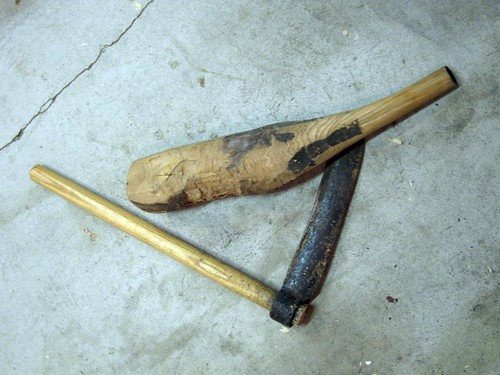Hi,
We are planning on taking down a big white oak tree in a few weeks and milling it up into a variety of boards with a portable sawmill. After reading Making a Joint Stool from a Tree I want to take a section of the trunk and split it by hand with wedges and a froe to get straight grain stock for that project.
Froes, I have. Something to hit them, I don't have. I was planning to make a mallet/beadle out of some osage orange, if I can find some. My question to the group, is should I make it like an oversized joiners mallet (rectangular head), or an oversided carvers mallet (round head)? What are the pros/cons?
Does anyone know where I can get a sizeable chunk of osage orange? I have tried my local turning store and woodcraft.
Thanks!
Chris




 Reply With Quote
Reply With Quote








 Jr.
Jr. 
